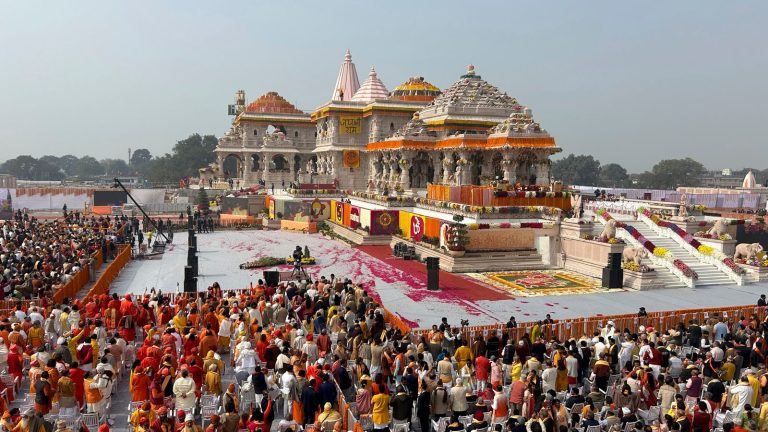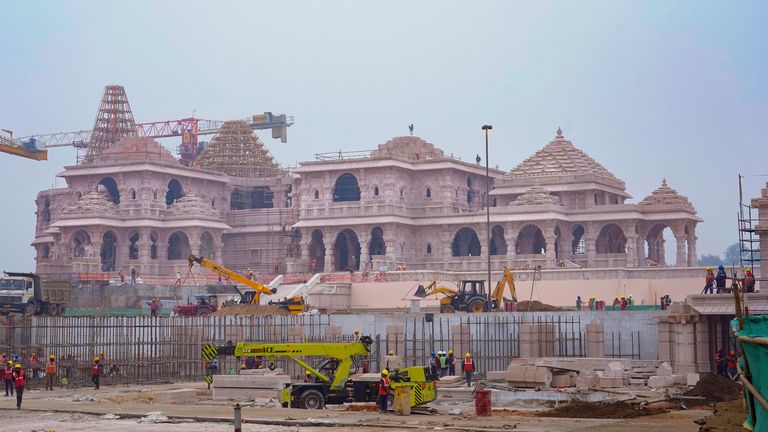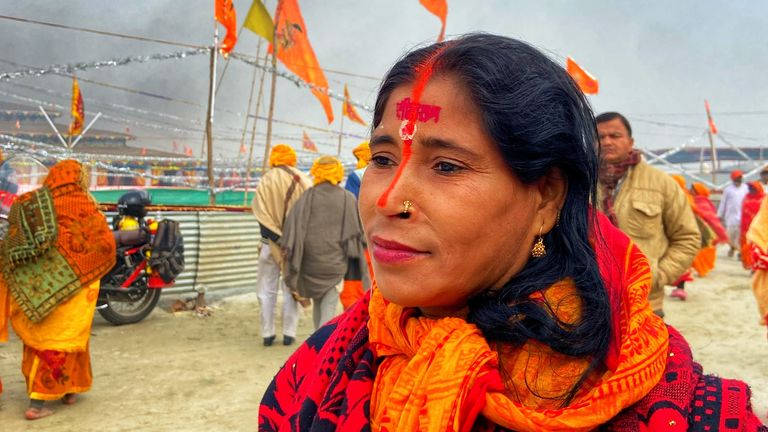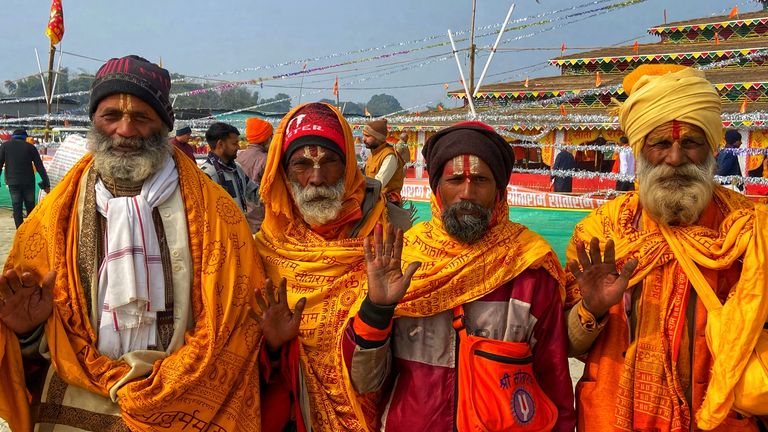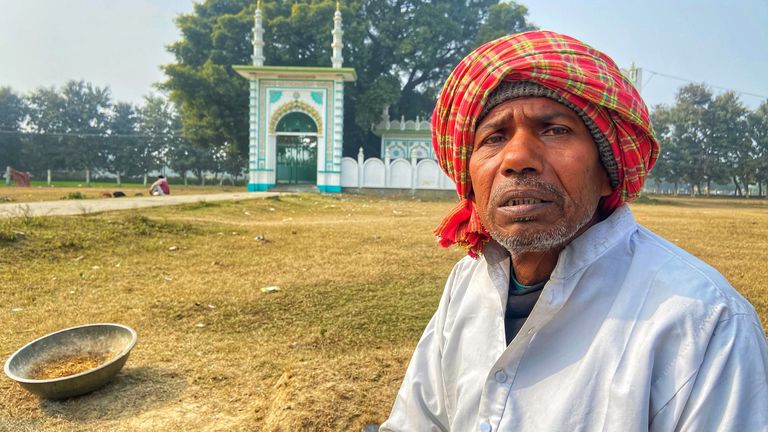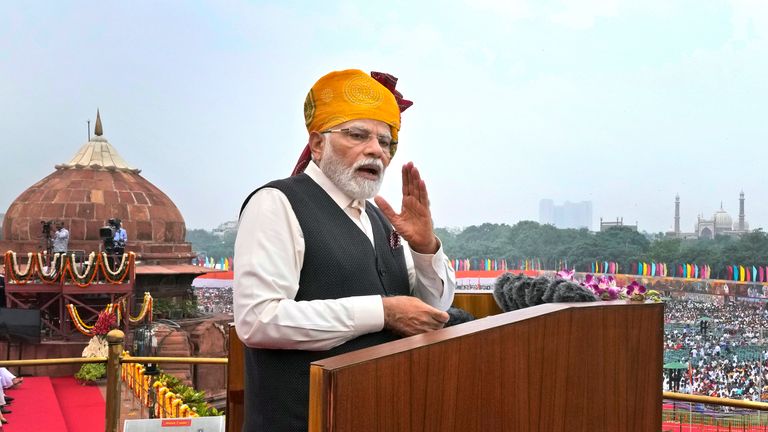A 19th century dispute, which went through decades of court proceedings, finally came to a head at the Ram Temple.
Consecrated – and inaugurated on Monday – by Prime Minister Narendra Modi, the temple site is believed to be the birthplace of Lord Ram, one of the most revered deities in the Hindu pantheon.
For many years temple construction was one of the most controversial and controversial issues in modern India.
Both Hindus and Muslims claim ownership of the 2.77-acre plot of land – the size of a football field – on which the Babri Mosque has stood since the 16th century.
Hindus believe that the Mughal Emperor Babur destroyed the original Ram Temple and built the Babri Mosque on the exact same place in 1528.
The demolition of the mosque sparked riots across India that killed 2,000 people, most of them Muslims.
The dispute ended in 2019 when India's Supreme Court called the destruction of the mosque a “flagrant violation” of the law, but awarded the site to Hindus while giving Muslims a different plot of land.
The city of Ayodhya in Uttar Pradesh, India's most populous state, was fully decorated and underwent an elaborate renovation in the run-up to the opening ceremony
Saffron flags, cut-outs of Lord Ram, strands of marigolds, decorative lights in the shape of Hindu symbols and fresh paintwork have transformed this sleepy, rundown little town.
Large LED screens show the Mass across the country, while Indian embassies around the world carry it and even on a propped-up screen in New York's Times Square.
Namit Khanna, who came from Singapore to witness the ceremony, told Sky News: “It's a cultural moment that I feel for all of us in India, which has been a struggle for many years for our ancestors.”
“This is like a different world, the gap of 500 years has been completed. We are all very happy. We have got a new festival…and today we have given our Lord,” says Rishabh Kaushal.
“Our ancestors died waiting for such a moment. Today we are very happy. We would like to thank Modi for this, as we can see the temple being constructed in our lifetime,” says Preeti, holding her 7-month-old baby. “
Mr. Modi is everywhere. His presence cannot be missed in the temple town and everyone credits him for building the Ram temple.
While only 8,000 people were officially invited, over 100,000 people gathered in the city including Bollywood royalty, industrialists, cultural icons, athletes and diplomats.
According to the Temple Trust, donations have topped more than 4 trillion rupees (£38 billion), pouring in from everywhere.
The absence of opposition party leaders who described the inauguration ceremony as a political project for Modi and his ruling Hindu nationalist Bharatiya Janata Party was conspicuous. They will leave today's program and come back another day.
A number of senior Hindu priests and heads of four major shrines, the Shankaracharyas, also refused to attend on the grounds that dedicating an incomplete temple undermined the Bible.
The temple will open to the public on Tuesday, and its management expects at least 100,000 visitors a day for the first few months.
The site has long been an intense religious flashpoint
The site has been hotly contested for decades, with both Hindus and Muslims claiming it.
In 1949, idols of Lord Ram were found in the central dome of the mosque and a large number of Hindus started praying there. This led to Muslim protests and the government closed the doors of the mosque, declaring it a disputed site.
In the 1980s, right-wing Hindu organizations and the Bharatiya Janata Party exploited Ayodhya's Ram Janam Bhoomi movement as a kind of Hindu renaissance. The promise of recovering the land and rebuilding the temple propelled them to the center stage of national politics.
On December 6, 1992, the Babri Mosque was destroyed by thousands of right-wing volunteers who called themselves “Kar Sevaks”. The events sparked religious riots across the country in which about 2,000 people were killed, most of them Muslims.
After that, the site was heavily protected and a series of ongoing lawsuits were fought by various groups for ownership.
On November 9, 2019, in a unanimous ruling by a five-judge bench, India's Supreme Court awarded the disputed site to Hindus, rejecting the Muslim claim.
“The archaeological evidence supports the infrastructure of Hindu origin. The Islamic parties failed to prove exclusive possession of the disputed land,” the court said.
The court ordered the government to give an alternative plot of land to the Muslims, about 25 kilometers away in a village called Dhanipur.
Except for a broken barbed wire fence, there are no signs of construction at this site.
Read more from Sky News:
Tens of thousands demonstrate against the far right
Sky News launches its new foreign affairs programme
Sitting on the vacant lot, 72-year-old Muhammad Islam told Sky News: “Look, it was a mistake, but we have to live within the bounds of the constitution. We have to abide by it when the decision is right.” “Or when it is not right. But we have to move forward with development, let us leave behind the issues of temples and mosques for now.”
“Modi is the prime minister of the country, not just one community,” says Shehbaz Khan, a 33-year-old welder. “We have no problems about the temple, we are happy. But there should be development for us too. The BJP’s slogan is ‘Development’ For the sake of the individual and everyone, but we believe that development is for the sake of the individual only.”
Religious division
The Ayodhya issue has polarized the country for decades and widened the gap between the Hindu majority and their 182 million Muslim brothers.
Hinduism is about 4,000 years old and is the religion of nearly 80% of the population. The first Islamic dynasty was established in the 13th century and Muslims make up about 14% of the population.
Since Modi's Bharatiya Janata Party has been in power since 2014, social division has deepened and a display of strong Hindu nationalism has contributed to religious tensions.
Restrictions on the slaughter and sale of cows (sacred by Hindus) have led to vigilance and the killing of a number of Muslim traders transporting cattle.
Today's ceremony will be seen as a political victory for Modi and his party and will boost his popularity with the majority.
It will also help him garner more votes in the next general election scheduled for the summer, which he is widely believed to win.
One hopes now that with the construction of the Ram Temple, the deep religious divisions and hostility between the two communities in the country will end.

